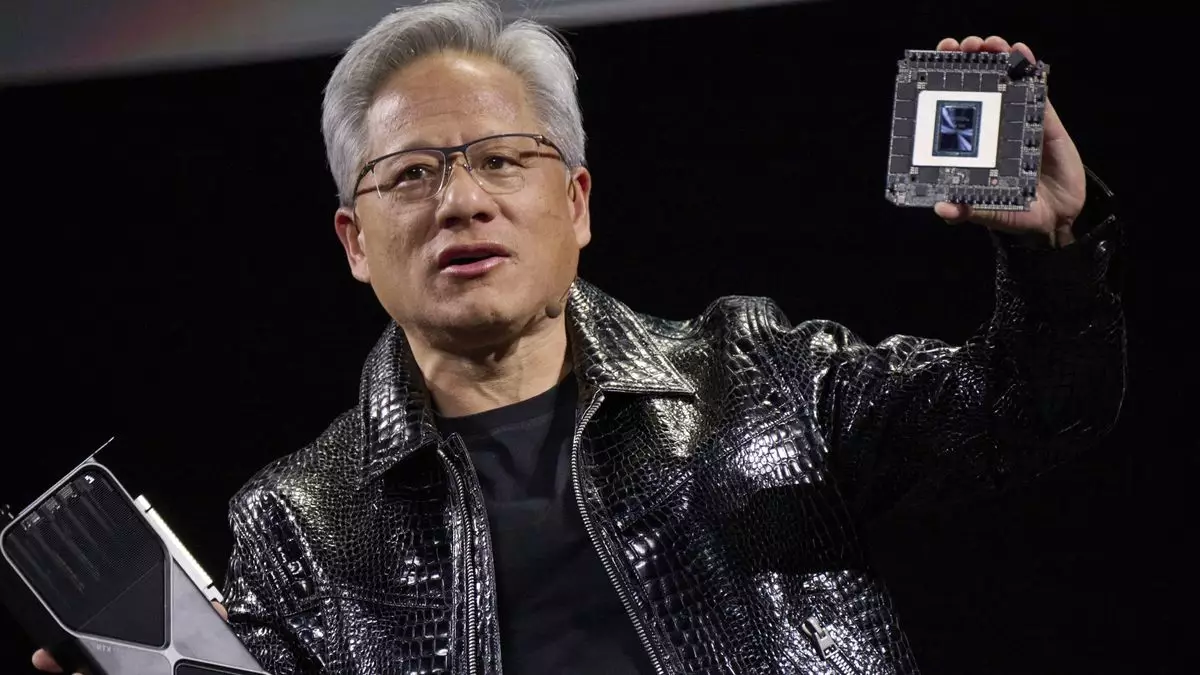Nvidia has long been at the forefront of graphic processing technology, particularly in the burgeoning field of artificial intelligence (AI). Their latest series, the Blackwell GPUs, was met with anticipation, particularly from major clients like Microsoft, Amazon, Google, and Meta. However, recent reports indicate a significant hiccup in this narrative, as these tech giants have scaled back their orders citing critical overheating issues. This not only raises concerns about the Blackwell series but also casts a shadow over Nvidia’s broader GPU lineup.
The rumors of overheating are not merely anecdotal. Sources suggest that clients have either deferred their orders or opted for the previous “Hopper” generation, which they perceive as more reliable. This situation underscores a crucial aspect of hardware development: the balance between innovation and reliability. Nvidia’s CEO, Jensen Huang, acknowledged the existence of “design flaws” in the Blackwell series, admitting that these flaws directly impacted production yield rates. While Huang did not specifically link these design flaws to overheating, the correlation cannot be overlooked considering the persistent reports surrounding temperature management.
Consider the factor of design complexity in high-performance chips. The migration to more advanced architectures, like that of Blackwell, often introduces unexpected challenges. These are not merely mechanical failures; they can be symptomatic of a larger issue in understanding the limits of the manufacturing process or the design theory behind these chips. The reported redesigns of liquid-cooled racks intended to house Blackwell GPUs suggest a desperate race against time to rectify these emerging problems.
Despite the concerns with the Blackwell architecture, this predicament should not necessarily translate into flaws in Nvidia’s new RTX 50 gaming GPUs. While the RTX 50 lineup is built on the same foundational architecture, it is engineered with distinct objectives in mind, primarily targeting the gaming sector rather than AI workloads. The workloads for gaming are inherently different, as they prioritize real-time graphics rendering rather than complex data calculations required in AI training and inference.
Moreover, Nvidia tends to tailor its chips based on the specific demands of different sectors. The architectural decisions in the RTX 50 might mitigate some of the concerns highlighted by their counterparts in the Blackwell series. Thus, while there may be apprehension surrounding the Blackwell GPUs, it would be premature to project these concerns broadly across all of Nvidia’s offerings.
It is important to scrutinize the sources that raise red flags. The Information, which has been a primary conduit for the overheating allegations, must be weighed alongside corroborative confirmations from other credible outlets. In a landscape rife with speculation, the absence of concrete evidence can often lead to overblown narratives. Until more sources validate the overheating claims, one might be wise to adopt a cautious stance regarding their implications for the RTX 50 series.
Alongside the heating issues, Nvidia’s dedication to maintaining performance integrity raises questions. With Huang citing the need for a re-evaluation of the Blackwell design, the company seems poised to maintain transparency about its engineering journey. The feedback loop from major customers will likely shape upcoming revisions and innovations.
Nvidia’s challenges with the Blackwell architecture are significant but not necessarily indicative of impending failure in their broader product lineup. As technology evolves, the ability to pivot and learn from setbacks becomes paramount. The gaming community, whose loyalty to Nvidia has been historically robust, will closely watch how the company navigates this tumultuous period.
Ultimately, the potential pitfalls encountered with the Blackwell GPUs serve as a reminder of the complexities inherent in hardware innovation. With the industry constantly pushing for higher efficiency and performance, each step forward may encounter bumps along the way. Nvidia’s response to these issues, coupled with their commitment to delivering reliable products, will be instrumental in maintaining their status as a leader in both gaming and AI technology.


Leave a Reply